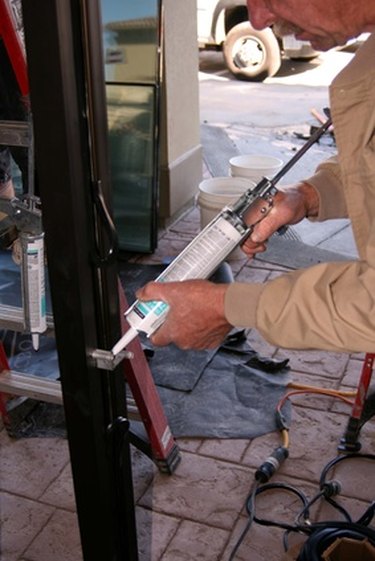Things You'll Need
Butyl rubber caulk
Warm water
Shears
Stiff wire
Caulking gun

Butyl rubber is one of the most durable sealing compounds on the market. This particular type of caulk is intended for applications that require an especially strong bond. Butyl rubber is water-resistant and never actually cures or hardens completely, making it an extremely flexible sealant. It can withstand adverse weather conditions and is ideal for outdoor purposes, such as sealing stone, wood or metal. Proper application of butyl rubber caulk will determine its effectiveness.
Step 1
Soak the cartridge of butyl rubber in warm water for approximately 20 minutes if it appears to be stiff. The sealant can be difficult to dispense from a caulking gun if cold temperatures have hardened it.
Video of the Day
Step 2
Snip the tip of the cartridge with a pair of shears and puncture the seal inside the nozzle with a stiff wire if necessary. Create an opening no more than 1/2-inch wide, then load the cartridge into a caulking gun.
Step 3
Apply a bead of the butyl rubber to one end of the targeted seam. Steadily draw the tip of the caulking gun along the entire length of it until an even seal is applied.
Step 4
Do not attempt to use any tools to smooth butyl rubber caulk as you would other sealants. It is extremely adhesive upon contact when freshly applied, and will stick to any applicator; always leave butyl rubber to cure as-is to avoid a messy application.
Step 5
Allow the caulk to dry over the course of up to two to three days before painting over it. Because it always retains a tacky texture after bonding, butyl rubber can withstand the random movement of shear paints.
Video of the Day